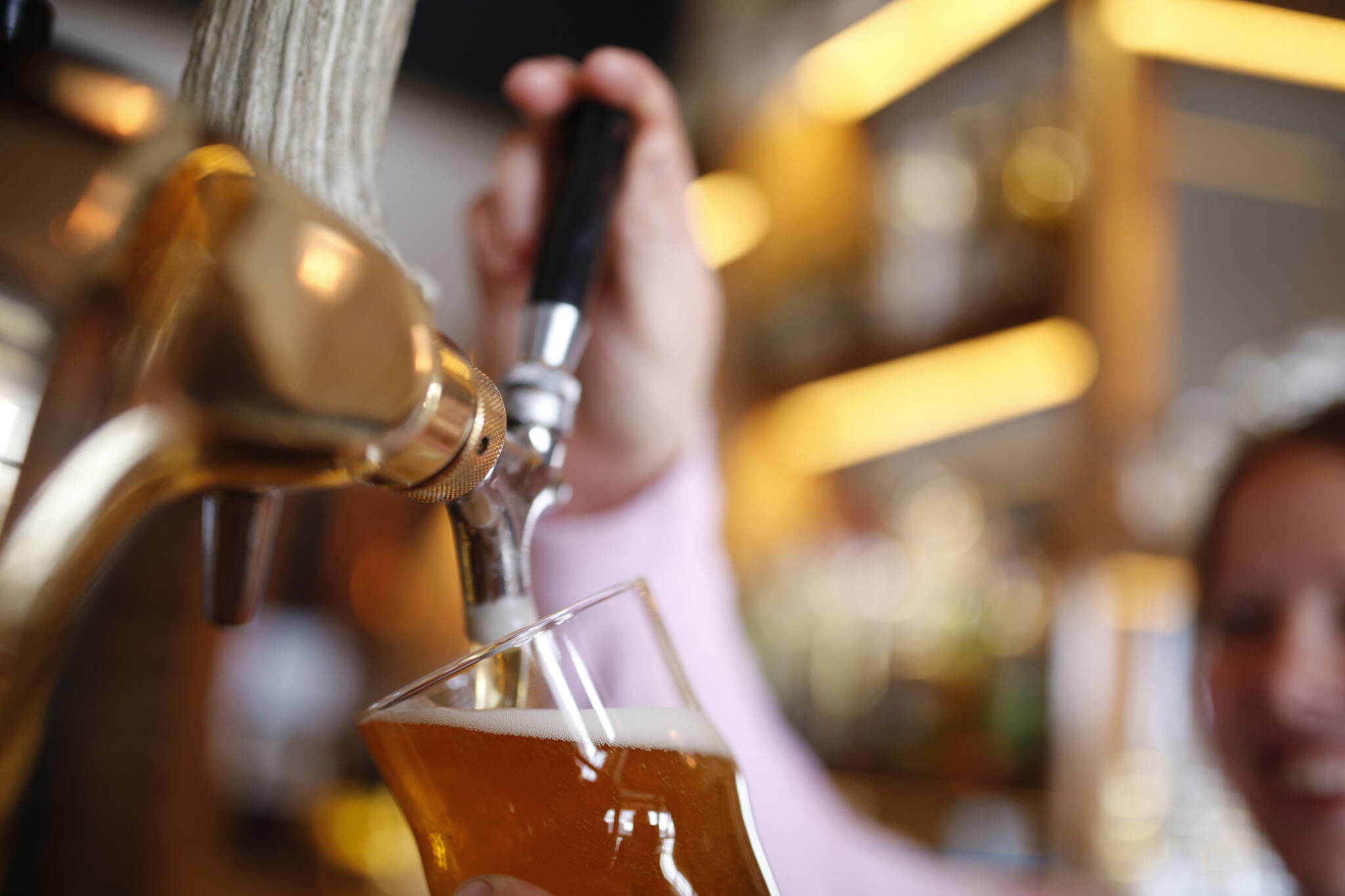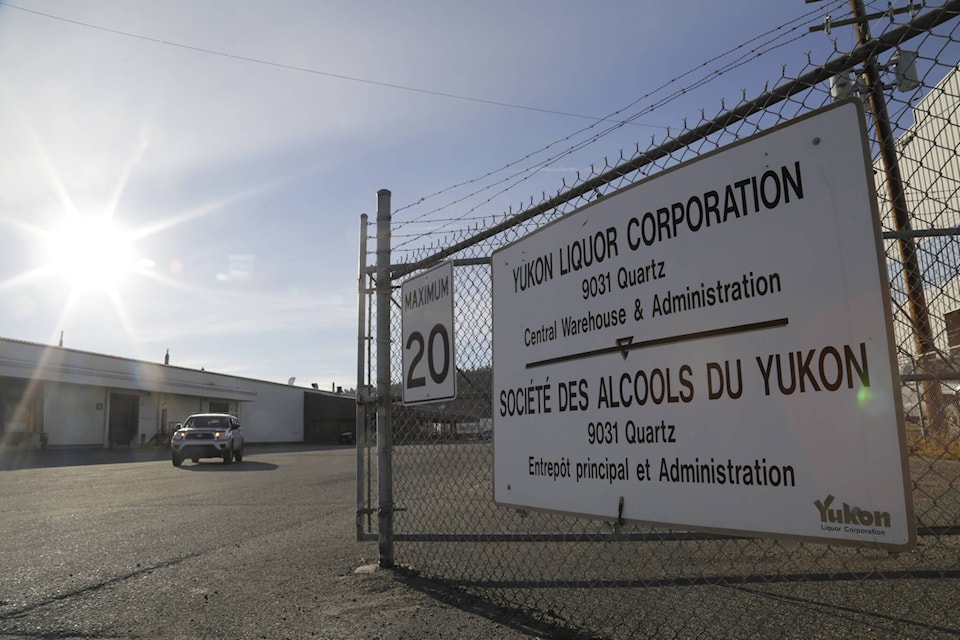The national roll-out for the campaign to reduce overall alcohol consumption began in January, but was foreshadowed last August with a draft version of low-drinking guidelines.
The national initiative dovetails with 2019 and 2020 recommendations put to the Yukon government to reduce alcohol consumption and change the Yukon’s culture of substance use.
The new national guidelines associate exceeding two drinks per week or two drinks per occasion with a “higher risk” to health. It came with a message that it is up to Canadians to make up their own minds about the risks they are willing to tolerate.
In the Yukon, the average person was found to consume 3.8 drinks per drinking occasion, and heavier drinkers reported 10.4 drinks per occasion in a 2015 health status report. It also found that Yukoners suffer more harms — cancers, violence, accidents, incarcerations, homicides, suicides, aggression, family troubles and other injuries — than other Canadians.
A 2021 health status report found that little has changed since 2015, noting that “if anything, some alcohol harm indicators have worsened.”
The territory has already been offered mitigating strategies by the 2020 Putting People First report, which the territorial government has already pledged to implement.
The recommendations include reduction of off-sales hours; minimum pricing policy; and restrictions on advertising. The report also notes that “First Nations people may prefer an approach based on abstinence, rather than harm reduction” and cited that 39 per cent of First Nations people in the Yukon have not had a drink in the past year.
The Liberal government has invested heavily in harm reduction and ear-marked $5.5 million for the substance use health emergency in the last budget address.
Harm reduction has been a leading strategy for support services in the Yukon in recent history.
While the recent national guidelines focus on reducing alcohol consumption, harm reduction focuses more on reducing the negative consequences of substance use while respecting the rights and autonomy of the people who drink and use drugs.
Harm reduction is also a guiding philosophy of Connective, the non-profit responsible for the Whitehorse shelter as well as the 16-unit Housing First building on Wood Street and the supervised residential housing program for men operated out of the Whitehorse Correctional Centre.
While the shelter’s no-barrier, person-centred approach was launched with harm reduction in mind, residents have said that substance use on the property has created a space that is detrimental to people trying to stay sober.
Chris Kinch, director of provincial and northern initiatives of Connective, spoke with the News on Jan. 13.
He explained how it is challenging to operate programs with such a wide range of vulnerable people with different addiction and mental health issues in one building, and especially in the North.
“Nobody really knows what to do,” Kinch said.
READ MORE: New research guidelines lower recommended drinks per week
Will labels be next?
In Canada it looks like these guidelines are only the first step as governments move to design environments touted to make it easier for people to make healthy decisions about their alcohol consumption.
A full reading of Canada’s Guidance on Alcohol and Health: Final Report (2023) indicates that mandatory labelling of all alcoholic beverages will likely be the next step. “While Canada is a world leader in mandating enhanced labels on tobacco and cannabis packages, alcohol containers are exempt from these requirements,” the report notes.
Labelling would include basic information like calories, ingredients, health warnings, and the number of “standard drinks” in each container. The argument follows that since consumers accept the premise of basic information on food and drugs, that labelling which includes health warnings will be acceptable to the Canadian public.
Warning labels on alcohol bottles were rejected by John Streicker, Minister responsible for the Yukon Liquor Corporation in 2018. The move made national headlines at the time when the Liberal government failed to muster up the courage to face threats of litigation from the liquor industry.
Now, years later, the report from the Canadian Centre on Substance Use and Addiction note that enhanced labels are an “increasingly popular strategy.”
Minimum unit pricing
There is also another possible extension with a different persuasive tact that would hit drinkers in their pocket book. The plan would be to use the “standard drink” information on labels and tie the units of alcohol in a bottle to a minimum price per alcohol unit for both liquor store sales and at bars and restaurants. This is known as minimum unit pricing (MUP), if the minimum price is set high enough, it has been shown to decrease consumption and reduce harms. It means that cheap, high strength liquor products would not be cheap anymore.
One of Canada’s top researchers in the area, Tim Stockwell, at the Canadian Institute for Substance Use Research at the University of Victoria, says every Canadian province has minimum pricing, but they don’t set it as efficiently as they could. “Some are close to that — Manitoba and Saskatchewan both have minimum prices that are graded according to the strength of the alcohol. It’s close to that minimum unit price.
“But the territories don’t do any of that.”
Stockwell spoke with the News last September and has a raft of international papers and studies that bear his name. He thinks minimum unit pricing is a good all-round solution that works on a number of fronts.
Moving to a minimum price would mean that when shopping for beer, consumers would have no problem seeing that light beers cost less than higher proof beers. The strategy does mean overall price increases for alcohol. The theory goes that, as prices rise, consumption decreases which decreases alcohol-related harms and the costs of health care etc. Stockwell said that Scotland moved to it [MUP] in 2018 and Ireland started in 2022.
He also explained that one of beauties of the system is that everyone makes more money. Retailers make more profits; distributors make more money and revenue to government increases. The extra government revenue can go towards to paying for hospitals and for treatment services. He says the pricing strategy is much preferred by the voting public compared to overall tax increases.
READ MORE: ‘We can’t get sober here:’ Whitehorse shelter unlikely place to find sobriety, advocates say
READ MORE: Council of Yukon First Nations sends 200 people outside territory for addiction treatment
READ MORE: Discharge options for people leaving treatment and detox not enough
Renewed focus on treatment and recovery
The voices for a renewed focus on addictions treatment are gaining momentum, at least in British Columbia and Alberta. Alberta, with its once independent alcohol and drug abuse commission (AADAC — a model previously examined for the Yukon) released its recommendations from the Alberta Mental Health and Addictions Advisory Council in March 2022. Their model for recovery-oriented care, includes harm reduction, but the focus is on recovery, and the length of time it takes for an individual to reorient themselves constructively to lead responsible and productive lives.
Both this report and a British Columbia Centre on Substance Use report, Strategies to Support Recovery: A Path forward (2018) cite the results of Canadian and international studies, that provide a comprehensive understanding of what life in recovery from addiction looks like. Titled, Survey of Life in Recovery from Addiction in Canada, the study was conducted in 2017. Similar studies were completed in Australia and the UK.
For watchers of the ebb and flow of different strategic models favoured at different times by various advocates, the model in Alberta is recognizable. It uses the word “addiction,” and talks about addicts and alcoholics. It advocates treatment, and long-term recovery. And, it also uses the word, others in Yukon and across Canada seem reluctant to talk about, the role of abstinence in healthy recovery.
Contact Lawrie Crawford at lawrie.crawford@yukon-news.com

